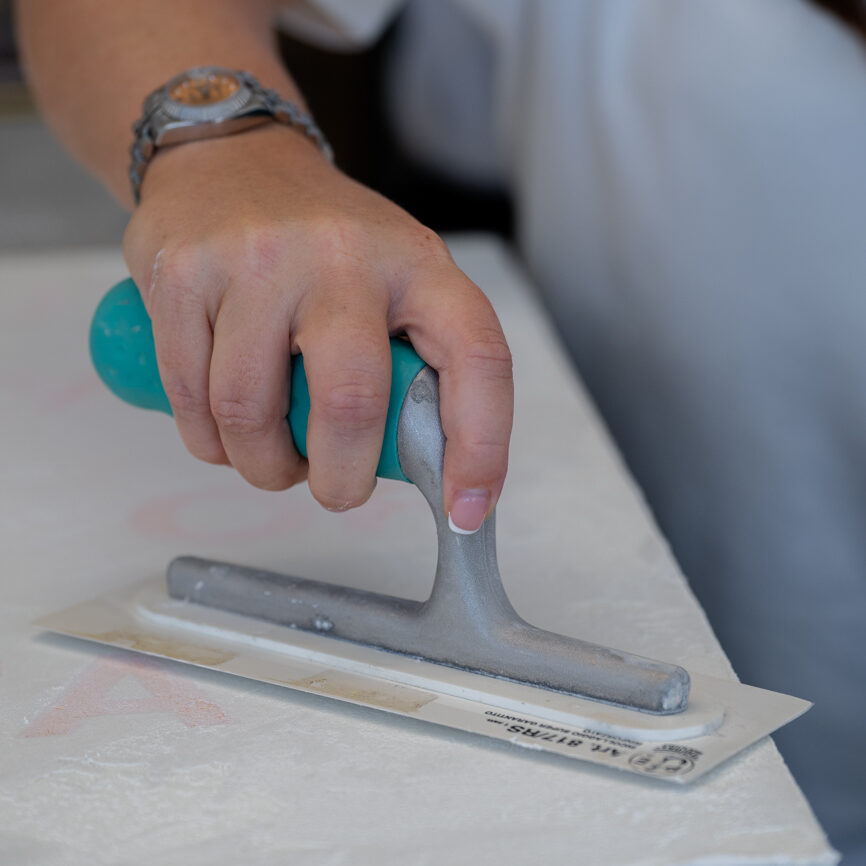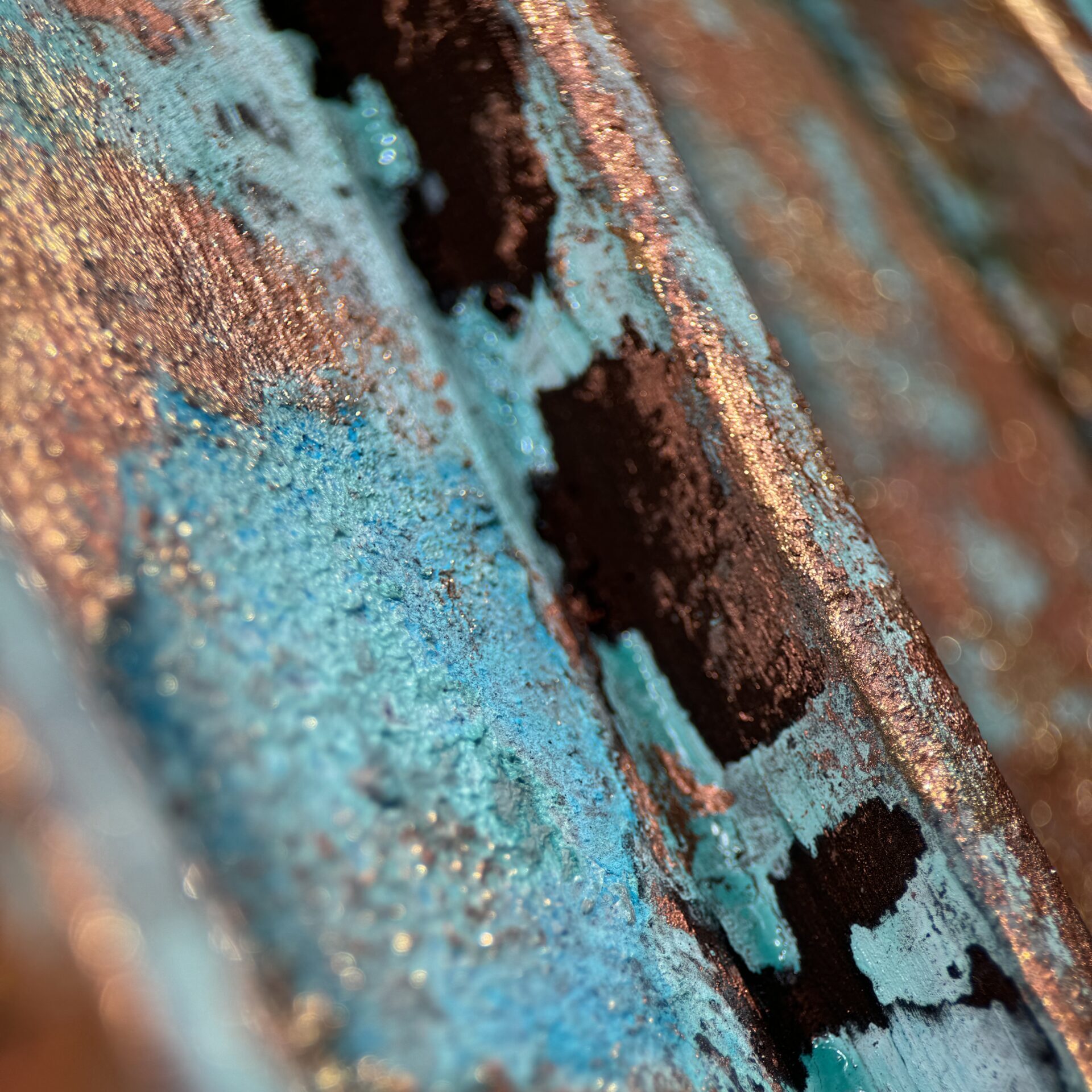
From Composition to Creation: The Ultimate Venetian Plastering Course for Future Artists
Embark on a transformative journey from composition to creation with our Ultimate Venetian Plastering Course for Future Artists. Venetian plaster, a timeless and elegant surface finish, offers endless possibilities for artistic expression and interior design innovation. This comprehensive course is designed to equip budding artists with the expertise, techniques, and confidence needed to master the […]
Embark on a transformative journey from composition to creation with our Ultimate Venetian Plastering Course for Future Artists. Venetian plaster, a timeless and elegant surface finish, offers endless possibilities for artistic expression and interior design innovation. This comprehensive course is designed to equip budding artists with the expertise, techniques, and confidence needed to master the art of Venetian plastering. Whether you are drawn to the luxurious sheen of polished plaster or the intricate textures of traditional Venetian plaster, our program promises to inspire, motivate, and elevate your creative potential. Join our vibrant community of passionate artists and surface designers, and let’s pave the way to your artistic future together.
What is Venetian Plaster?
Origins and History
Venetian plaster, also known as stucco Veneziano, traces its origins back to ancient Rome. The technique was refined during the Renaissance in Venice, Italy, where artisans sought durable and aesthetically pleasing finishes for their grand architecture. Venetian plaster gained popularity for its ability to create a marble-like appearance using lime-based materials mixed with marble dust. Its unique qualities allowed buildings to breathe, reducing moisture build-up and enhancing longevity. Over centuries, the art of Venetian plastering evolved, incorporating modern materials and methods while preserving its traditional craftsmanship. Today, it stands as a symbol of luxury and timeless elegance, widely used in both residential and commercial spaces to achieve sophisticated wall finishes.
Defining Characteristics
Venetian plaster is renowned for its distinctive aesthetic and versatile application. The material is primarily composed of slaked lime and marble dust, which together create a smooth, polished finish reminiscent of natural stone. One of its defining characteristics is its ability to be tinted in a wide range of colours, offering endless possibilities for customisation. Moreover, Venetian plaster is highly durable and breathable, making it resistant to mould and mildew. Its application involves layering and burnishing, resulting in a surface with depth and visual interest. The finish can range from matte to high gloss, depending on the desired effect. Additionally, Venetian plaster is eco-friendly, as it is a natural material with low VOC emissions. These attributes make it a favoured choice for both classic and contemporary interior designs, providing a luxurious yet sustainable option for enhancing any space.
Introduction to Venetian Plaster
Traditional Techniques Explained
Traditional Venetian plastering techniques involve meticulous application methods that highlight the material’s natural beauty and depth. The process begins with preparing a smooth surface, free of imperfections, to ensure optimal adhesion. Artisans then apply multiple thin layers of the plaster using a trowel, with each layer left to partially dry before the next is added. This layering technique creates a rich texture and visual depth, often enhanced by the inclusion of natural pigments for colour variation. The final layers are burnished with a trowel or spatula to achieve a polished sheen, emulating the appearance of polished marble. In some methods, a wax coating is applied to increase the plaster’s gloss and protect the surface. Mastering these traditional techniques requires skill and patience, resulting in a timeless finish that remains highly sought after in modern interior design for its elegance and durability.
Modern Interpretations
In contemporary design, Venetian plaster has been reimagined to suit modern aesthetics while retaining its classic appeal. Today’s artisans experiment with new materials and innovative techniques to expand its application beyond traditional methods. Modern Venetian plaster can incorporate synthetic additives to enhance durability and offer a broader palette of colors and finishes. This evolution allows for the creation of bold textures, metallic sheens, and even incorporation of patterns or stencils, catering to diverse stylistic preferences. Additionally, advancements in technology have enabled easier application methods, making it more accessible for DIY enthusiasts and professionals alike. Despite these innovations, the essence of Venetian plaster remains unchanged, with its ability to transform ordinary surfaces into works of art. As a result, it continues to be a favored material in both residential and commercial spaces, offering a seamless blend of tradition and modernity in interior design.
The Composition of Venetian Plaster
Key Ingredients and Materials
Venetian plaster is composed of simple yet effective ingredients that contribute to its unique characteristics. The primary component is slaked lime, a material derived from limestone that is processed to remove impurities. This lime base is then mixed with finely ground marble dust, which imparts the plaster’s distinctive texture and sheen. Natural pigments are often added to create a variety of colors, allowing for customisation in design. The traditional composition is both eco-friendly and breathable, which helps prevent moisture accumulation and promotes a healthy indoor environment. Some modern formulations may include synthetic additives to enhance durability, flexibility, and ease of application. This combination of natural and advanced materials ensures that Venetian plaster can withstand the test of time, making it a versatile choice for both heritage restorations and contemporary design projects. Whether used in its classic or modern forms, the composition of Venetian plaster remains central to its enduring appeal.
Unique Properties and Benefits
Venetian plaster boasts several unique properties that set it apart from other wall finishes. One of its most notable characteristics is its breathability, which allows moisture to evaporate and reduces the risk of mould and mildew. This makes it a healthy choice for indoor environments. Additionally, Venetian plaster is highly durable and can endure wear and tear, maintaining its beauty for many years. Its natural composition also makes it eco-friendly, with low VOC emissions contributing to better indoor air quality.
The aesthetic versatility of Venetian plaster is another significant benefit. It can be customised in various colours, textures, and finishes—from matte to high gloss—offering endless design possibilities. The material’s ability to achieve a marble-like appearance without the hefty cost of actual marble makes it a popular choice for both luxury and budget-conscious projects. These benefits collectively make Venetian plaster a timeless and practical option for enhancing any space.
Common Uses in Interior Design
Residential Applications
Venetian plaster is a popular choice for residential applications due to its ability to transform ordinary spaces into luxurious environments. In living rooms, its reflective sheen can add depth and elegance, creating a sophisticated backdrop for furniture and art. Bathrooms benefit from Venetian plaster’s moisture-resistant properties, making it ideal for high-humidity areas while adding a touch of spa-like serenity. Kitchens can also be enhanced with this finish, offering a chic and durable alternative to traditional tiles or paint.
Bedrooms and entryways can gain a unique character with textured Venetian plaster, which adds warmth and personality to the space. The material’s versatility allows it to complement various design styles, from contemporary to classic. Furthermore, the wide range of available colours and finishes enables homeowners to customise their interiors to reflect their personal tastes. By incorporating Venetian plaster, residential spaces can achieve a timeless and elegant aesthetic that stands out.
Commercial and Public Spaces
Venetian plaster is equally impressive in commercial and public spaces, where its aesthetic appeal and durability make a significant impact. In retail environments, it creates an upscale atmosphere that enhances the shopping experience, drawing customers in with its luxurious finish. Restaurants and hotels benefit from its ability to create unique, inviting interiors that leave lasting impressions on guests. The material’s versatility allows it to fit seamlessly into various design themes, from modern minimalism to opulent classicism.
Corporate offices and reception areas also utilise Venetian plaster to convey professionalism and sophistication. Its durability ensures that high-traffic areas maintain their pristine appearance over time, reducing the need for frequent maintenance. Additionally, public spaces like museums and galleries use Venetian plaster to provide a neutral yet elegant backdrop that highlights exhibits and artwork. The combination of beauty and functionality makes Venetian plaster a favoured choice for enhancing commercial and public environments.
DIY vs. Professional Application
Benefits of Professional Expertise
While DIY enthusiasts may be tempted to tackle Venetian plastering projects themselves, enlisting professional expertise offers numerous advantages. Professional artisans bring years of experience and specialised training to the table, ensuring a flawless finish that amateurs may struggle to achieve. Their knowledge of traditional and modern techniques enables them to handle complex applications with precision, creating consistent and high-quality results.
Professionals also have access to premium materials and tools that may not be readily available to DIYers. This ensures that the plaster’s composition and application are optimal, enhancing its durability and aesthetic appeal. Additionally, hiring a professional saves time and effort, allowing homeowners and business owners to focus on other priorities. Mistakes made during a DIY project can be costly to fix, whereas professionals provide peace of mind by delivering a perfect finish from the start. Ultimately, professional expertise elevates the quality and longevity of Venetian plaster installations, making it a worthwhile investment.
DIY Tips and Considerations
For those eager to try Venetian plastering on their own, careful planning and attention to detail are crucial. Start by selecting high-quality materials, including slaked lime, marble dust, and natural pigments, to ensure a durable and attractive finish. Prepare the surface meticulously, removing any imperfections and applying a base coat if necessary. This step is vital for achieving optimal adhesion and a smooth final result.
Apply multiple thin layers of plaster with a trowel, allowing each layer to partially dry before adding the next. Patience is key, as rushing can lead to uneven textures and blemishes. Burnish the final layer to achieve the desired sheen, using a spatula or trowel to create a polished effect. Consider practicing on a small surface first to hone your technique and gain confidence.
While DIY Venetian plastering can be rewarding, it requires significant skill and patience. For large or intricate projects, professional assistance is often the best route to ensure a flawless finish.
Conclusion: The Versatility of Venetian Plaster
Expanding Artistic Horizons
Venetian plaster opens up a world of possibilities for artists and designers, encouraging them to push creative boundaries and explore new dimensions in surface design. Its versatility allows for experimentation with colours, textures, and finishes, enabling creators to develop unique and personalised spaces. Whether it’s achieving a classic marble look or a modern textured finish, Venetian plaster offers an artistic medium that transcends traditional limitations.
As artists delve into the craft, they discover the potential to transform ordinary surfaces into extraordinary works of art, enhancing both the aesthetic and functional aspects of environments. This medium not only enriches individual projects but also contributes to broader trends in interior design, influencing how spaces are perceived and experienced.
Embracing Venetian plaster invites artists to innovate and redefine their artistic expression, ensuring that their work remains relevant and captivating. Through this medium, the boundaries of art and design continue to expand, offering endless opportunities for creativity and inspiration.
Enrol in a Venetian Plaster Course today
Embrace the opportunity to master Venetian plaster by enrolling in a comprehensive course designed for future artists and surface designers. A structured Venetian plastering course offers hands-on training, enabling you to learn both traditional techniques and modern innovations from seasoned professionals. Through a mix of theoretical knowledge and practical application, you will gain the confidence and skill needed to execute stunning plaster finishes.
Courses often cover a wide array of topics, from understanding the unique properties of polished plaster to exploring advanced texturing methods. This education empowers you to transform your artistic vision into reality, whether for personal projects or professional reasons. Joining a course also connects you to a vibrant community of like-minded individuals, fostering collaboration and inspiration.
Take the first step towards expanding your artistic repertoire and enhancing your creative potential. Enrol in a Venetian plaster course today, and pave the way for a future filled with artistic growth and innovation.










